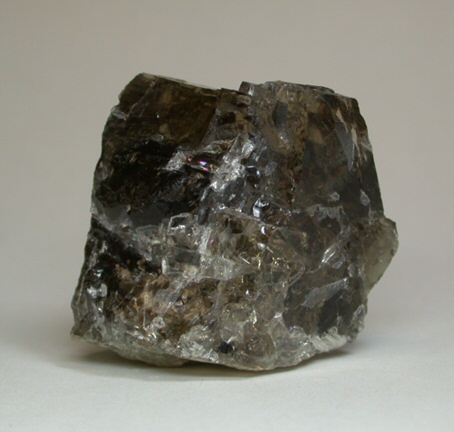Radiation-induced smoky color and
associated electron paramagnetic resonance (EPR) signals develop only
in potassium feldspar (KAlSi
3O
8) free of
structurally bound molecular water. Fluid inclusion water does not
influence coloration. The integrated intensity of each of the four
bands (11,600, 16,200, 19,100, and 27,200 cm
-1) in the
optical absorption spectra are lineraly correlated with the
doubly-integrated intensity of a broad, asymmetric first
derivative at g
eff = 2.027 in, EPR spectra. In microcline, the EPR pattern is resollved into an asymmetric six-line pattern at g
eff = 2.024 and a single derivative at g
eff - 2.009 which, based on analogy to alkali-silicate glass, are due respectively to [SiO
4/K
+]
2+
and a hole shared between the two nonbonding oxygens on Si. We propose
that structural water inhibits formation of smoky centers in feldspar
by releasing atomic hydrogen during irradiation which des troys centers
while diffusing towards a stable site.

Smoky sanidine from Eifel, Germany

